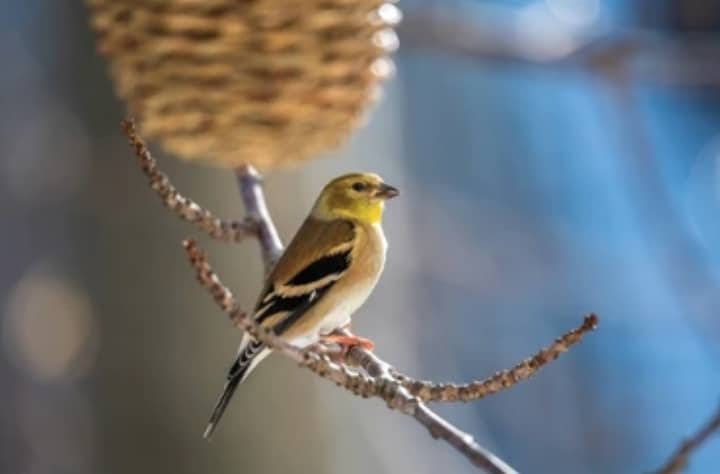
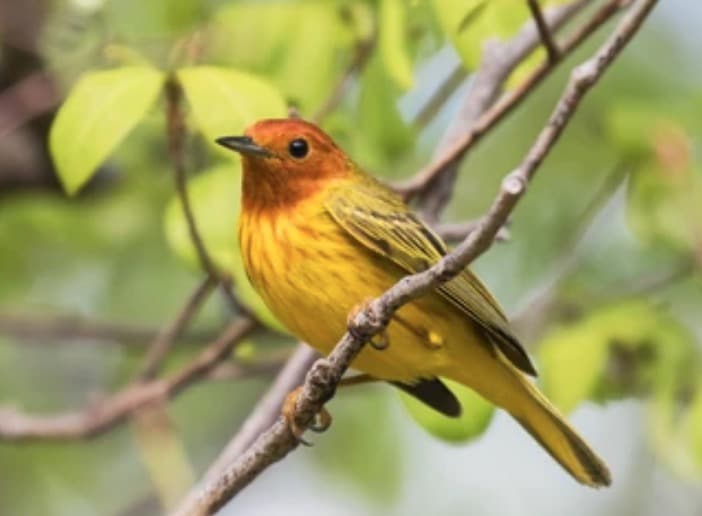
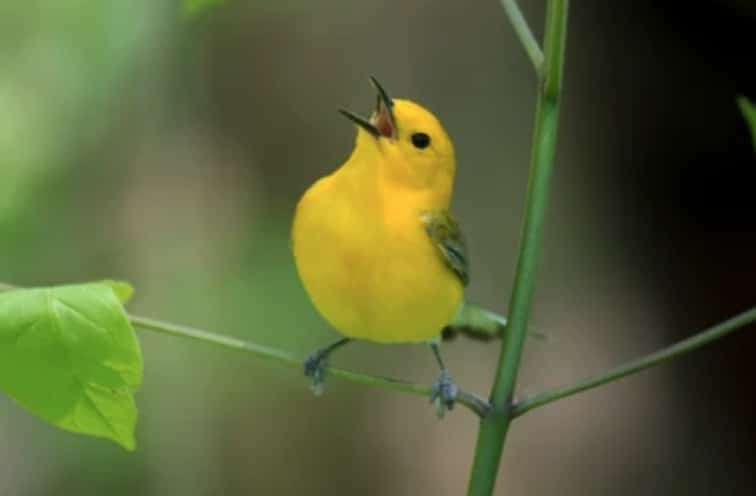
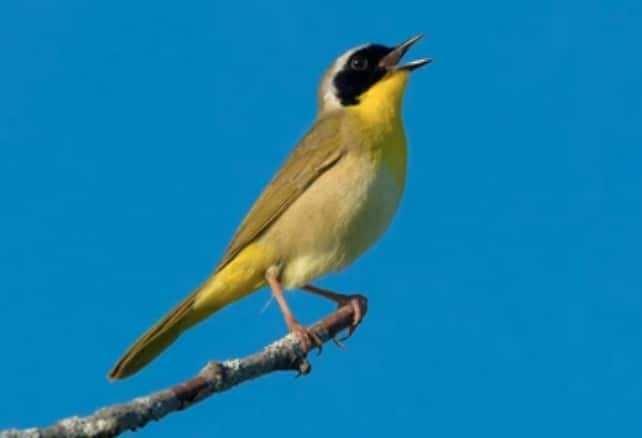
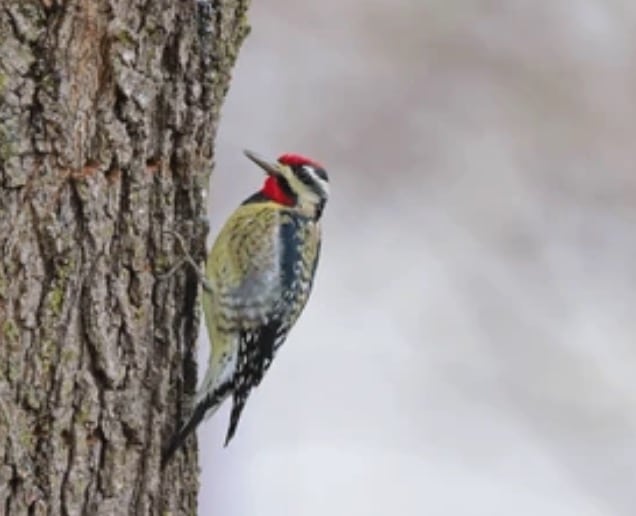
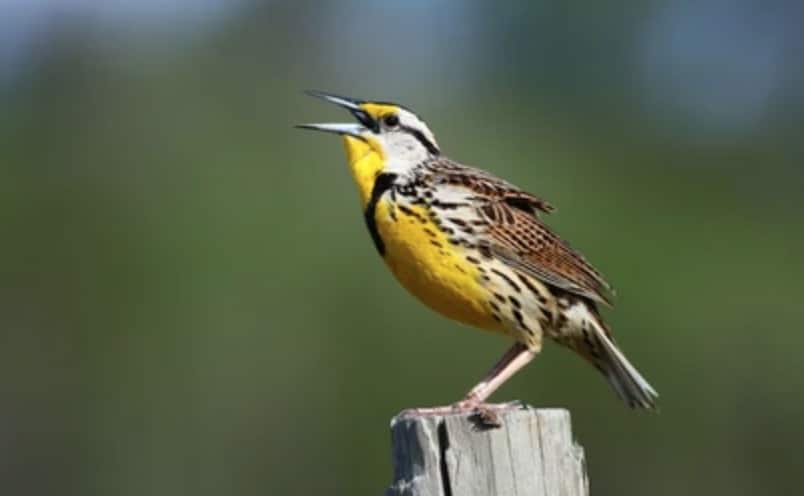
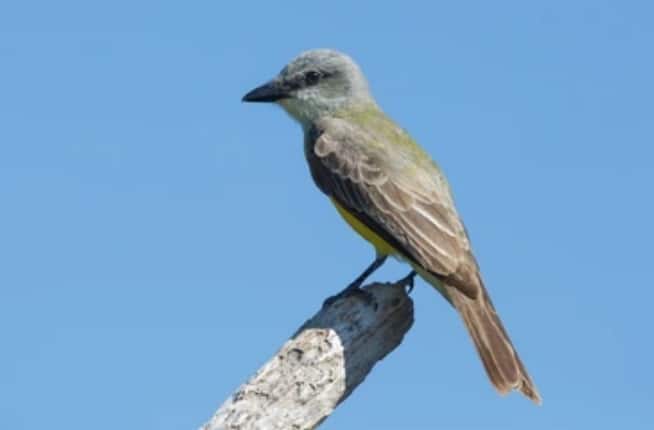
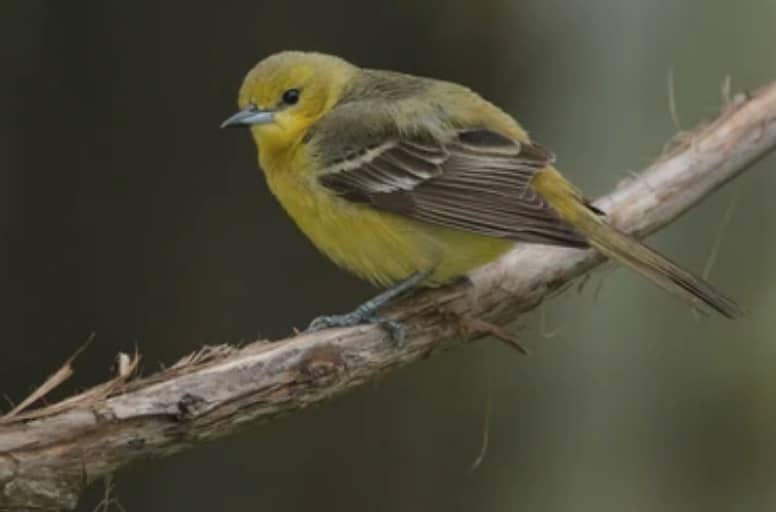
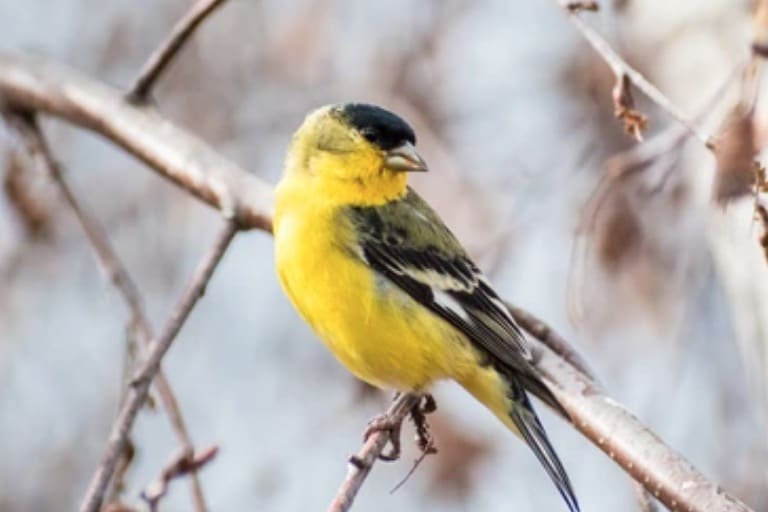
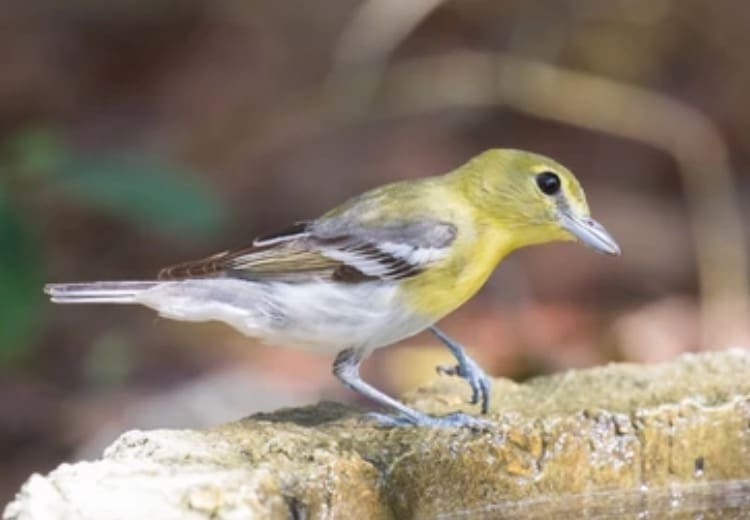
| Image | Bird Species | Scientific Name | Preferred Habitat | Notable Characteristics |
|---|---|---|---|---|
 | American Goldfinch | (Spinus tristis) | Open fields, gardens, woodlands | Bright yellow in males during breeding season, small and vibrant |
 | Yellow Warbler | (Setophaga petechia) | Shrubby areas, wetlands | Entirely yellow body, sweet song, often found near water |
 | Prothonotary Warbler | (Protonotaria citrea) | Swamps, wooded streams | Bright yellow body, bluish wings and back, prefers wet woodlands |
 | Common Yellowthroat | (Geothlypis trichas) | Marshes, wetland edges | Yellow throat and breast, males have a distinct black mask |
 | Yellow-bellied Sapsucker | (Sphyrapicus varius) | Woodlands, forests | Black and white with a yellow wash on the belly, red forecrown and throat in males |
 | Eastern Meadowlark | (Sturnella magna) | Fields, prairies, open country | Yellow underparts with a distinctive black “V” on the chest, melodious calls |
 | Couch’s Kingbird | (Tyrannus couchii) | Woodlands, thickets near water | Bright yellow belly, grayish head and back, aggressive defender of its territory |
 | Orchard Oriole | (Icterus spurius) | Open woodlands, orchards, parks | Smaller than other orioles, males have chestnut and black coloration with yellow underparts |
 | Lesser Goldfinch | (Spinus psaltria) | Open woodlands, scrub areas | Males have a black back and a bright yellow underside |
 | Yellow-throated Vireo | (Vireo flavifrons) | Wooded areas, forests | Bright yellow throat and chest, olive-green upperparts, loud and melodious song |
Texas provides a haven for a vibrant variety of avian species, among which the yellow-bellied birds stand out with their striking plumage. These birds, characterized by their vivid yellow undersides, can be observed across diverse Texan landscapes.
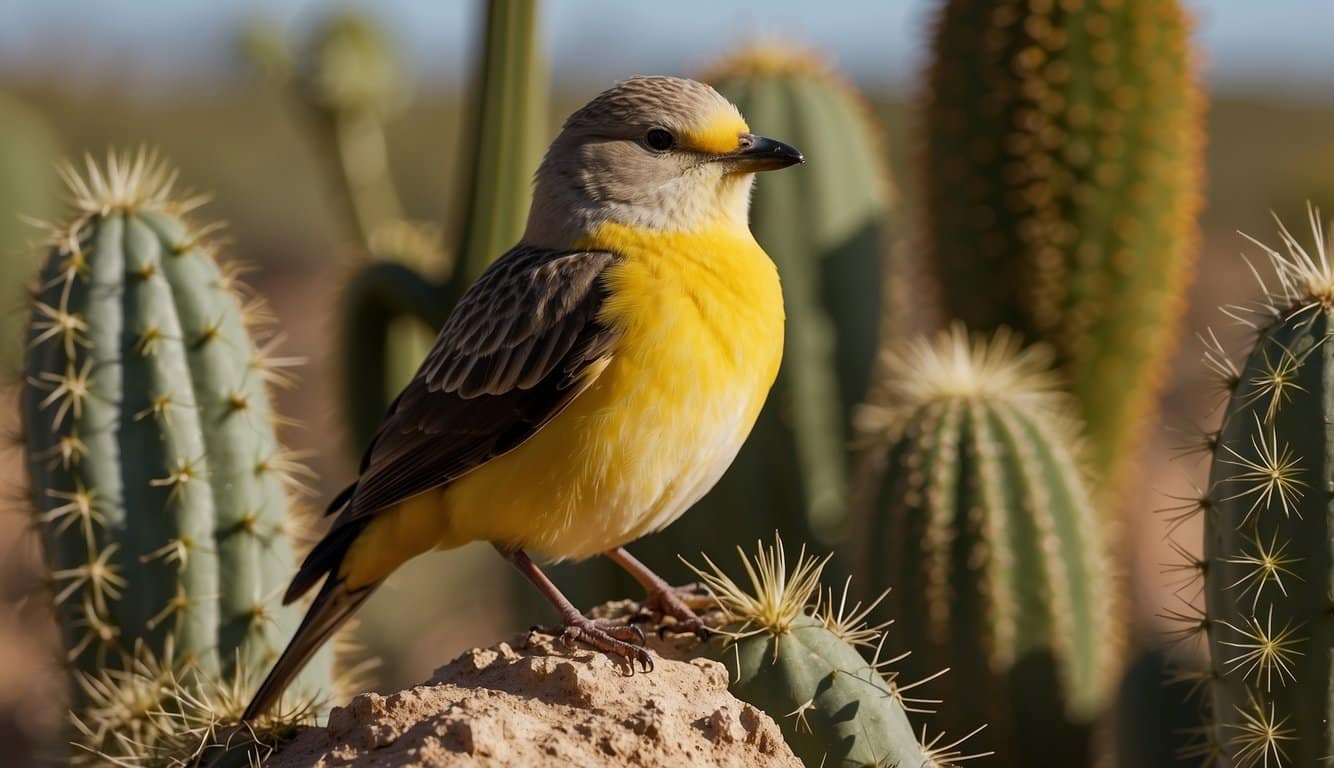
The identification of a yellow-bellied bird in Texas involves observing not just the coloration but also taking note of size, shape, and behavioral patterns.
These birds inhabit various ecosystems within the state, from the thick forests and grassy meadows to the bustling city parks. Their dietary preferences can range from insects to seeds, and observing these can offer additional clues to their species.
Key Takeaways
- Texas hosts a variety of yellow-bellied birds, identifiable by their distinctive yellow undersides.
- These birds occupy diverse habitats across the state, including forests, meadows, and urban parks.
- Conservation efforts are important to support the diverse bird population, whilst birdwatching guidelines help promote sustainable observation practices.
Identification of the Yellow-Bellied Bird in Texas
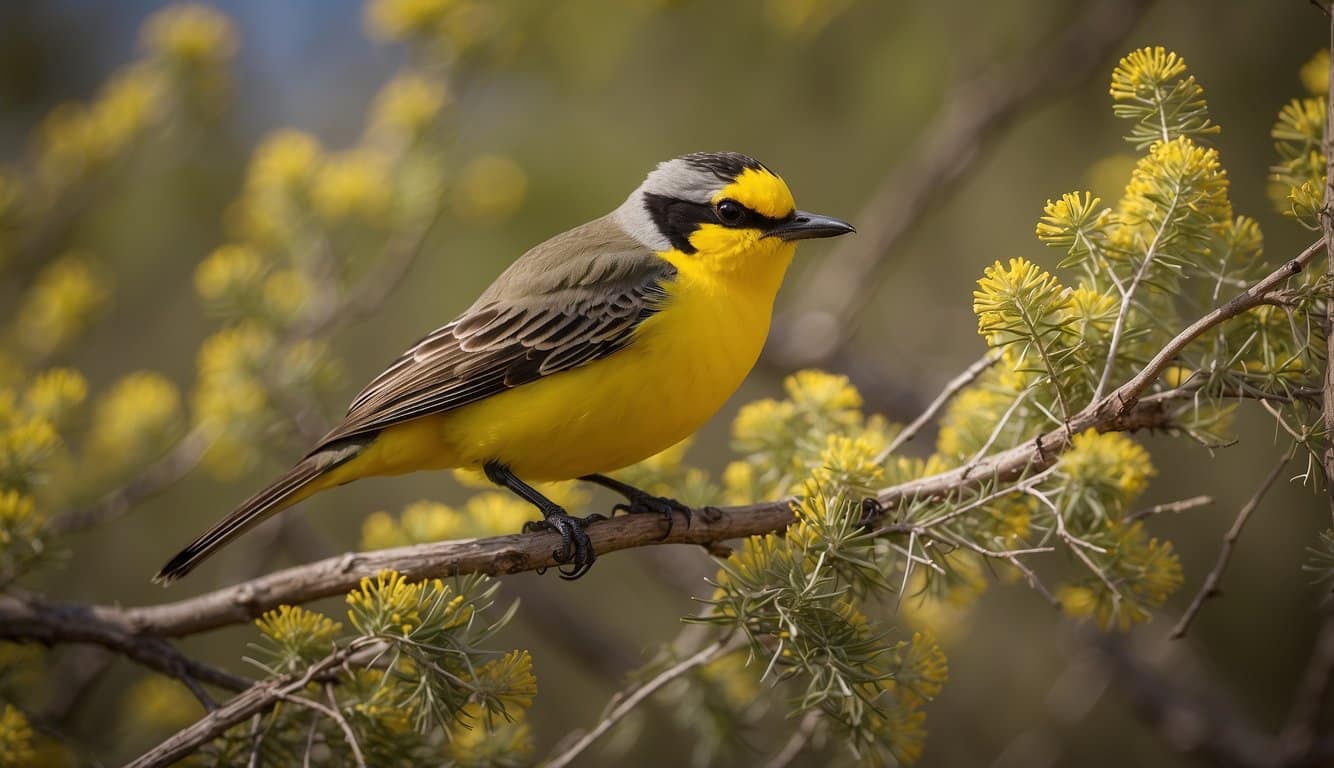
Texan landscapes boast a variety of avian species, including those with distinctive yellow bellies. For bird enthusiasts, identifying these birds is a rewarding challenge.
Key markers such as size, coloring, and habitat contribute significantly to proper identification.
Physical Characteristics:
- Gray Upperparts: Birds like the Nashville Warbler present a contrast with their yellow bellies, having gray upperparts and a distinct white patch near their legs.
- Facial Markings: Certain species display characteristic facial markings or hoods, aiding in their identification.
Size Variations:
These birds typically range in length from 4.3 to 5.1 inches (11-13 cm), and they weigh between 0.2 and 0.5 ounces (6-14 g).
For instance, the slender profile of the Lesser Goldfinch is complemented by its small stature.
Habitats:
- Woodlands and Marshes: The Yellow Warbler is often found across woodlands, marshes, and riparian corridors.
- Diverse Ecosystems: Texas’ varied ecosystems support a range of yellow-bellied birds, each with their preferred environments.
Habitat and Distribution
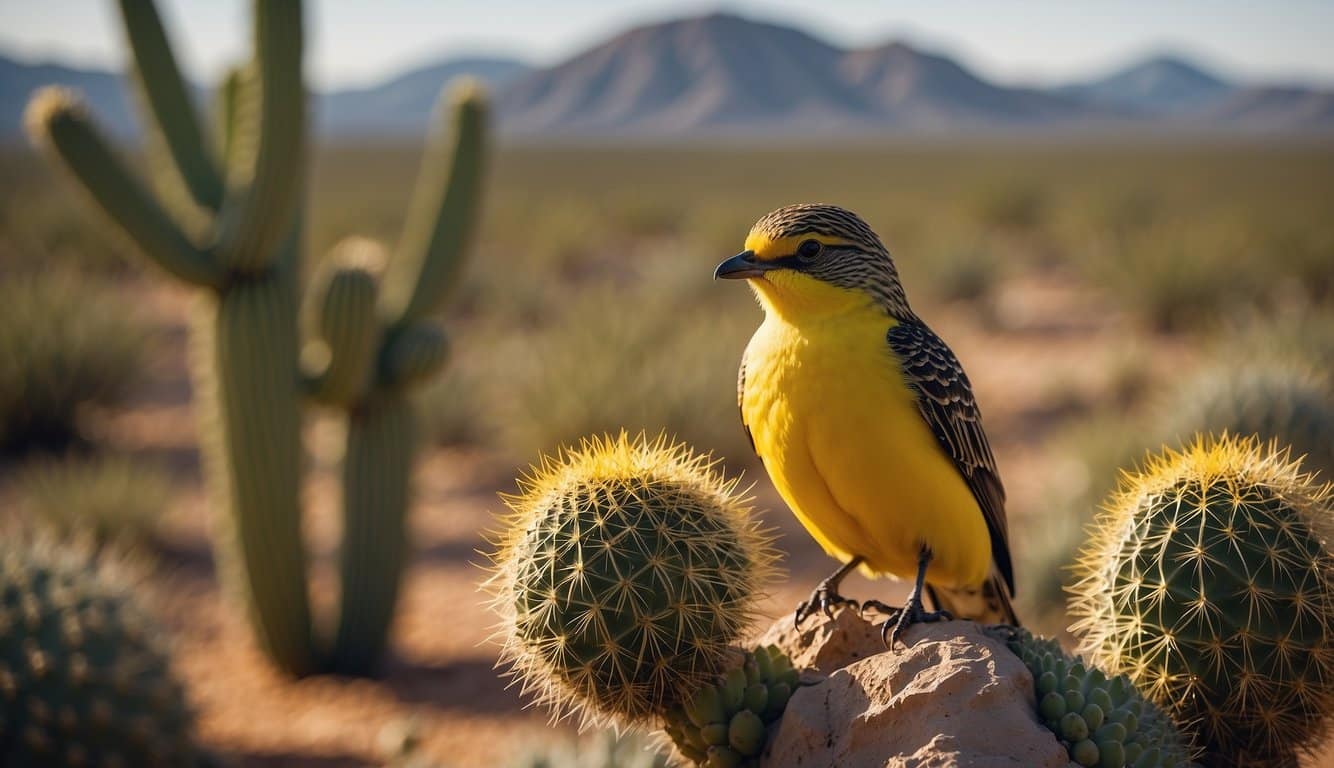
Yellow-bellied birds in Texas are found primarily in distinct regions and ecosystems, each species favoring various habitats ranging from woodlands to riparian zones. Their migration patterns reflect seasonal movements, further defining their presence across Texas.
Regions and Ecosystems
Yellow-bellied birds like the Yellow Warbler and Buff-bellied Hummingbird occupy diverse habitats.
The Yellow Warbler can often be seen in:
- Woodlands
- Marshes
- Riparian areas near water bodies
This species is particularly common in the eastern and central regions of Texas, where the availability of dense shrubbery and insects is abundant for breeding and feeding.
On the other hand, the distinctive distribution of birds such as the Yellow Belly Bird Texas is more localized to the southern parts of the state, including:
- Gulf Coast
- Lower Rio Grande Valley
These areas provide the necessary environment for their survival, with ample food sources and appropriate nesting sites.
The varied landscapes of Texas, from coastal regions to the forested valleys, support a rich tapestry of yellow-bellied avifauna.
Migration Patterns
The migration patterns of yellow-bellied birds in Texas can be singular to each species.
For example, the Yellow-rumped Warbler is typically considered a winter visitor and is observed in Texas from September to May. During the winter months, birdwatchers might include the Yellow-rumped Warbler in up to 34% of the state’s checklists.
These birds migrate to Texas to escape the harsh northern winters and return to their breeding grounds as spring approaches.
Monitoring migration patterns is crucial for both conservation efforts and birdwatching enthusiasts to understand when and where these vibrant birds can be observed.
Behavior and Diet
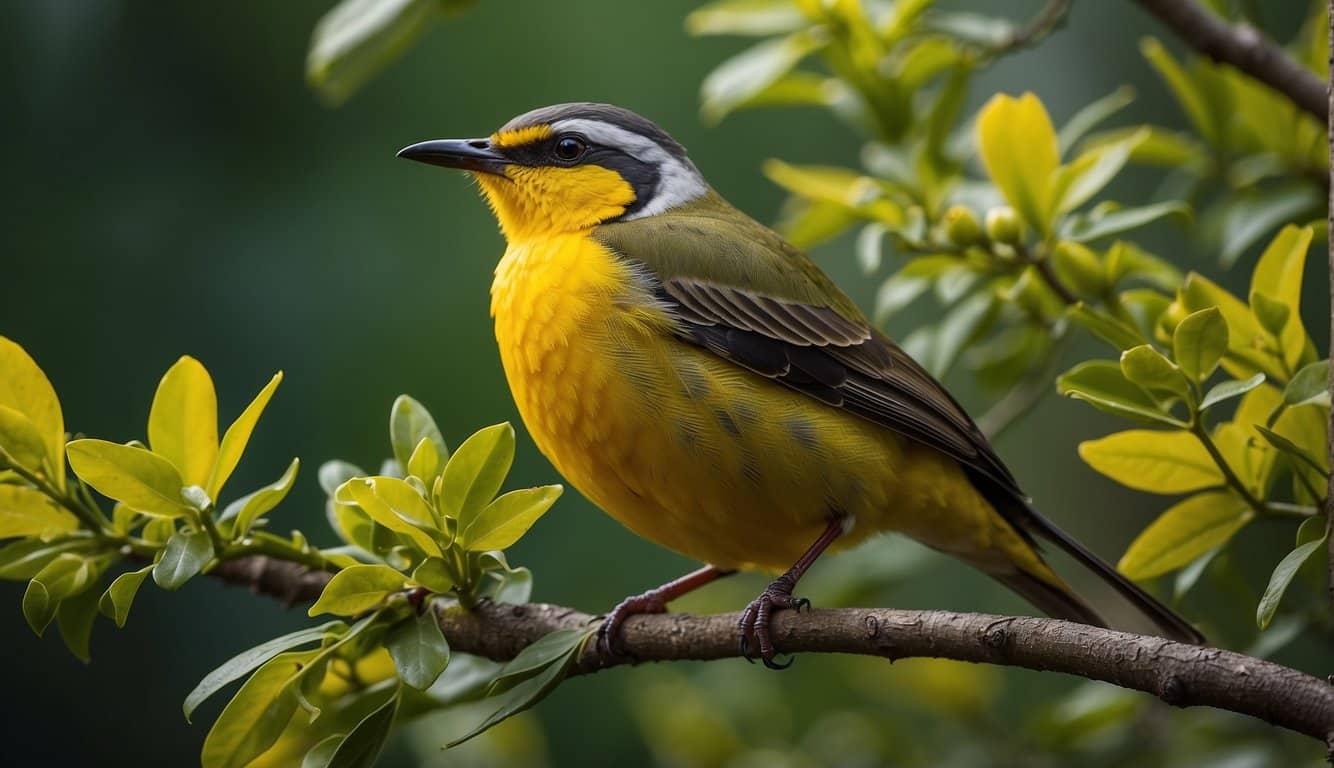
Yellow-bellied birds in Texas exhibit unique behaviors and dietary preferences that are crucial to their survival. They not only adapt to the diverse Texan ecosystems but also play an important role in the local ecology.
Feeding Habits
Yellow-bellied birds such as the Yellow Belly Bird Texas primarily sustain themselves on a diet that consists of insects and fruits.
Insects such as beetles, flies, and caterpillars make up a significant part of their diet, predominantly during the breeding season to feed their young.
They also consume a variety of fruits and berries, which are more prevalent in their diet during the winter when insects are less abundant.
Their foraging takes place both in the canopy and on the ground, where they employ different tactics like gleaning from leaves or catching insects in mid-flight.
Social Structure
The social structure of these birds during the breeding season is quite solitary; they are known to be territorial and will defend their breeding areas aggressively.
Outside of breeding times, they can often be seen foraging in mixed flocks, taking advantage of the safety in numbers and the increased foraging opportunities that a group provides.
During migration periods, these social structures are particularly evident as the birds join large flocks to travel to their wintering grounds or return to their breeding territories.
Conservation Status
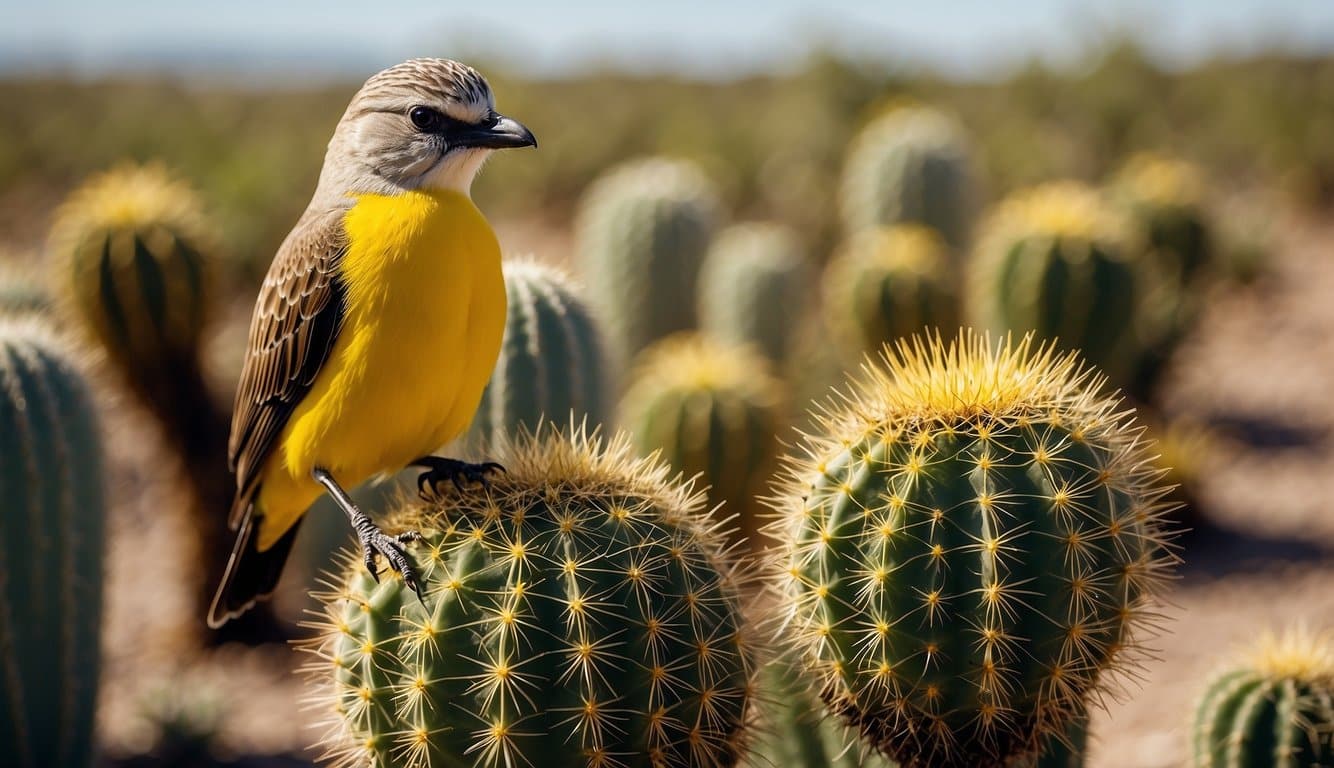
The yellow-bellied birds of Texas are confronting serious challenges affecting their long-term survival.
Threats to the Species
Habitat Loss: The primary threat to these species is the loss of natural habitats due to expansive urbanization and deforestation. As their living spaces are transformed for human use, the populations suffer significant decline.
Other Factors: Additional threats include adverse impacts from climate change, predation by invasive species, and human-made obstructions that disrupt migration patterns.
Conservation Efforts
Protection of Habitats: Conservationists are taking action by securing protected areas specific to the yellow-bellied birds’ natural habitats.
Legislation and Advocacy: Efforts are also focused on strengthening environmental laws and engaging the public in habitat restoration initiatives.
These concerted actions aim to curb population decline and foster resilience within the species.
Frequently Asked Questions
This section addresses the common inquiries about the distinctive yellow-bellied birds of Texas, revealing the nuances of their identification, sexual dimorphism, size, and native species to particular regions.
What species of birds in Texas are identified by their yellow underbelly?
Several bird species in Texas boast a bright yellow underbelly. These include the Painted Bunting, Great Crested Flycatcher, Yellow-Rumped Warbler, and the Buff-bellied Hummingbird. Each species can be identified by this characteristic yellow coloring on their lower bodies.
How can you distinguish between male and female yellow-bellied birds in Texas?
In species like the Painted Bunting, males typically exhibit more vibrant colors compared to the females’ paler yellow underbellies. However, the degree of color saturation can vary, sometimes making it challenging to distinguish between sexes based purely on coloration.
What size are the birds with yellow bellies commonly found in Texas?
The size of yellow-bellied birds in Texas varies widely. For example, the Buff-bellied Hummingbird is quite small, measuring around 4 inches in length, whereas the Great Crested Flycatcher is larger, about 8.5 inches long.
Which birds with yellow chests are native to South Texas?
South Texas is host to yellow-chested birds like the Audubon’s Oriole, Altamira Oriole, and the Common Yellowthroat. These birds are native to the region and are often seen displaying their vibrant yellow chests in their natural habitat.
Are there any birds with both black plumage and a yellow belly in Texas?
The Scott’s Oriole is one such bird species in Texas that displays a contrasting combination of black plumage and a bright yellow belly, which is particularly noticeable when the bird is in flight or perched in open areas.
What is the significance behind the yellow belly feature in Texas bird species?
The yellow belly in birds often serves as a distinguishing trait during mate selection and species identification.
It also may play a role in camouflage and signaling within species-specific behaviors.
In Texas, these birds’ yellow coloration is one of the many adaptations seen in the diverse avian population.